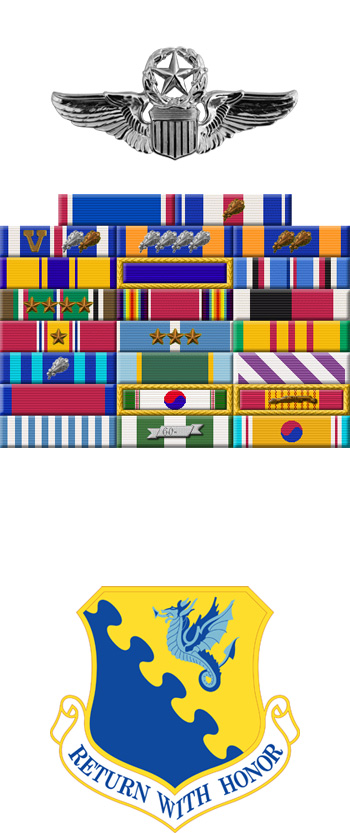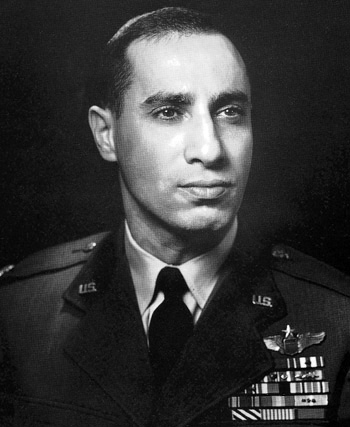
|
James Jabara |
 |
|||
| Rank, Service | ||||
Colonel O-6, U.S. Air Force |
||||
| Veteran of: | ||||
|
||||
| Tribute: | ||||
James Jabara was born on October 10, 1923, in Muskogee, Oklahoma. He enlisted in the U.S. Army Reserve on June 2, 1942, and entered the Aviation Cadet Program of the U.S. Army Air Forces on November 9, 1942. Jabara was commissioned a 2d Lt and awarded his pilot wings at Moore Field, Texas, on October 1, 1943, and after completing P-51 Mustang training, he was assigned to the 382nd Fighter Squadron of the 363rd Fighter Group in England from April to August 1944. During this time, Lt Jabara was credited with the destruction of 1.5 enemy aircraft in aerial combat plus 1 probable and 1 damaged. He returned to combat with the 354th Fighter Squadron of the 355th Fighter Group in February 1945, serving with the occupation forces until December 1945. During World War II, Jabara also destroyed 5.5 enemy aircraft on the ground while strafing enemy airfields. After the war, he attended the Tactical Air School at Tyndall AFB, Florida, and later served with the 51st Fighter Group on Okinawa from 1947 to 1949. He was then assigned to the 334th Fighter Interceptor Squadron of the 4th Fighter Interceptor Wing at New Castle County Airport, Delaware, and went with the group to Korea in December 1950. During his first tour in Korea, Capt Jabara was credited with destroying 6 enemy aircraft in aerial combat plus 1 probable and 4 damaged, which made him the first jet-versus-jet ace in history. He served with Headquarters U.S. Air Force in the Pentagon and with Air Training Command at Scott AFB, Illinois, before returning to combat in Korea in January 1953. During his second tour, Maj Jabara destroyed another 9 enemy aircraft in aerial combat plus 2 probables and 2 damaged, for a two-war total of 16.5 enemy aircraft destroyed in the air, 4 probables, 7 damaged, and 5.5 destroyed on the ground. He returned to the U.S. in July 1953 and served with Headquarters 32nd Air Division at Syracuse AFS, New York, before taking command of the 337th Fighter Interceptor Squadron at Westover AFB, Massachusetts. Col Jabara's final assignment was as Commander of the 31st Tactical Fighter Wing at Homestead AFB, Florida, where he served from June 1965 until his death in an auto accident on November 17, 1966. During his last assignment, Col Jabara ferried aircraft to Vietnam and flew 1 combat mission. James and his daughter Carol Anne, who died on November 19 from injuries in the same auto accident, were buried together at Arlington National Cemetery. |
||||
|
||||

